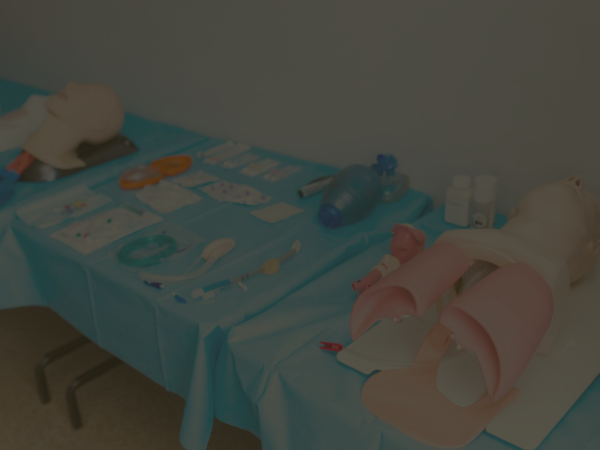What’s Behind the Rise of the Nurse Practitioner? According to BLS.gov (Bureau of Labor Statistics), the number of positions for Nurse Practitioners is expected to grow 45% over the next 10 years, a rate unheard of in just about any other profession. The industry will be adding nearly 120,000 jobs.
What’s driving this trend? Many factors appear to be contributing to this phenomenon and explain why nurse practitioner training is at an all-time high. And what these factors don’t show is a short-term bubble in the nurse practitioner job market. That’s always a concern for those just starting school or considering going back to get additional certification.
Rather, the elements driving this trend appear to be a major and forward-thinking overhaul of how communities manage health. This move is leading to better patient care and improved outcomes, all while lowering costs. Interested in the rise of the Nurse Practitioner? Here’s what you need to know.
1. Increasing Demand for Primary Care
 There has been a major shift in healthcare from reactive to proactive. Patients today don’t just want to know how to get rid of symptoms. They want their medical providers to help them stay healthy through preventative measures. And the pandemic has pushed people even more into this way of thinking. One 2020 survey of Australians, which does align with a global trend, showed:
There has been a major shift in healthcare from reactive to proactive. Patients today don’t just want to know how to get rid of symptoms. They want their medical providers to help them stay healthy through preventative measures. And the pandemic has pushed people even more into this way of thinking. One 2020 survey of Australians, which does align with a global trend, showed:
- 61% have increased interest in healthcare news
- 51% say they’re more proactive about health and wellness
- 44% are getting more active with a regular fitness routine
- 43% are paying more attention to things that improve mental health
Primary Care Can Prevent Chronic Disease
Most, if not all, of the chronic diseases that specialists manage are preventable, according to CDC.gov. The Centers for Disease Control and Prevention mentions five factors that science shows can reduce the prevalence of these diseases:
- Eating well
- Being physically active
- Avoiding tobacco
- Avoiding excessive drinking
- Getting regular health screenings
Primary care directly impacts number five and indirectly impacts the other four by providing accurate patient education during its early stages (e.g., pre-diabetes) and before it happens (e.g., explaining the dangers of being sedentary).
Patients want this education and seek it out online, through friends and other patients. But often, they’re not getting the most reliable information from random sources.
Primary care gets accurate information into these patients’ hands, so they can make better choices.
For a very long time, patients’ perception has been that patients won’t make the lifestyle changes needed. So instead, doctors typically prescribe and manage symptoms, especially in the US. They’re taught to do so in medical school. But studies show that nurse practitioners are more proactive and forthcoming with patient education. This is improving patient outcomes.
Not Enough Doctors to Meet Primary Care Demand
The Affordable Care Act (ACA) improved the prestige of primary care and reaffirmed a commitment to more primary care for patients.
But it’s one thing to say we need more primary care physicians. But it’s quite another to get them into position. Despite the importance of primary care, they’re paid less, partially because they tend to spend more time with each patient.
This transition to more primary care requires an increasing number of medical providers who can provide primary care services. The Association of American Medical Colleges estimates that within 10 years, the US will be short as many as 43,000 primary care doctors needed to fill the demand.
Nurse Practitioners can assess, diagnose, and treat. They can offer preventative services and oversee maintenance care. They can handle many of the responsibilities that doctors may have routinely managed in the past.
This requires a re-thinking of what really requires a doctor-level education. And increasingly, this is happening around the US and the world.
2. More Need for Collaboration
The quality-based care that patients, insurance, and the government are increasingly demanding requires a more collaborative medicine approach. When professionals work together with their various expertise and experiences, patients receive better care. Increasing the number of NPs in the field expands these medical teams.
Nurse Practitioners bring something extra special to collaborative care because many NPs worked for years as RNs before pursuing NP certification. As former RNs, they’ve experienced the more patient-focused side of medicine. Nurses spend significant time with patients compared to doctors, so they get to know their patients and see firsthand when modern medicine is failing patients. They bring this unique perspective to the table, but as NPs rather than RNs, they now have greater peer “respect” in the room that they may have felt was lacking before.
3. Better Pay
The demand for Nurse Practitioners is accompanied by a greater appreciation for the service they provide within organizations. And because of it, salaries are on the rise across the country. The median salary has risen from $105K to $115K over just the past five years.
4. Need for More Affordable Healthcare Options
Nurse Practitioners’ salaries are going up. But at the same time, it can bring healthcare costs down.
That’s huge because, per CMS.gov (Medicare), in 2019, the US spent $3.8 trillion ($11,582 per person) on healthcare. That’s nearly 18% of total US spending and double the cost of healthcare in the 1980s. We’re intentionally looking pre-COVID for the number numbers since 2020 costs were high for other reasons.
How Do Nurse Practitioners Save Money?
It’s certainly not because they’re providing inferior care.
To become a medical doctor, a student may have to complete 11-15 years of training, including residency, according to TWU.edu. Becoming a Nurse Practitioner takes 6-8 years, which includes undergraduate education.
That extra training time amounts to a longer wait to fill vacated physician positions and higher healthcare education costs, which we all know to get passed on to patients and their insurance companies.
So what are the savings? You can see them on both sides of the equation. First, it costs 20-25% less to train an NP vs. an MD. Second, measured hourly, medical care provided by an NP costs 2/3 to 1/2 the cost of MD care.
This is certainly not to say that doctors aren’t needed. They are and will continue to be. But when a Nurse Practitioner can do the same high-quality job with less training time and cost 90% of the time, that’s cost-savings for patients, government healthcare programs, and the industry as a whole. It’s better for national health.
5. Career Nurses Ready to Advance
As previously mentioned, many long-time nurses choose to go back to school to advance their careers, make more money, and fill the overwhelming need for Nurse Practitioners. We’re really just talking about 2-3 more years to become an NP if you’re already an RN. This makes the transition from nurse to NP much easier than say Nurse or Paramedic to MD.
6. Reputable Online Options
The growth and expansion of the online education industry make it easier for them to take courses while keeping their full-time jobs. Online medical education, in general, is giving those who want to advance their careers but can’t afford to spend all day in a classroom a better option.
In fact, these days, all nurses can get certified and recertified in Basic Life Support, Advanced Cardiac Life Support, CPR, Pediatric Advanced Cardiac Life Support, and more 100% online.
7. Critical Shortage in Pediatric Care
Similar to primary care, pediatrics is experiencing a major shortage of pediatricians who can provide quality care to children. Children in rural and underserved urban communities suffer the most. Nurse Practitioners can fill this role, so there’s a huge push to get more NPs certified to treat pediatric patients.
8. Prevalence of Chronic Conditions
According to CDC.gov, over 51.8% of US adults not currently in institutions have at least one of these commonly diagnosed chronic conditions. That includes 27.2% (68 million) who had more than one.
- Arthritis
- Cancer
- Chronic obstructive pulmonary disease (COPD)
- Coronary heart disease
- Asthma (as an adult)
- Diabetes
- Hepatitis
- Hypertension
- History of stroke
- Weak or failing kidneys
On top of other factors we’ve discussed, more sick people equals an overwhelmed healthcare system, leading to the rise of the nurse practitioner.
9. Some Groups Disproportionately Impacted
 As if the increase in chronic conditions weren’t bad enough, communities also find themselves disproportionately affected by illness. Further CDC research shows the following.
As if the increase in chronic conditions weren’t bad enough, communities also find themselves disproportionately affected by illness. Further CDC research shows the following.
- Men with multiple comorbidities (25.9%)
- Women with multiple comorbidities (28.4%)
- Increased risk of developing multiple chronic illnesses with age (no surprise there)
- Highest prevalence among non-Hispanic white adult males (30.6%)
- Lowest among non-Hispanic Asian (16.4%) and Hispanic adults (17.7%)
The type of insurance a person has can also impact how sick they are. In people under 64:
- 11.6% of uninsured adults have been diagnosed with multiple conditions. But we need an asterisk here since the uninsured may either not be sick enough to feel the need for insurance or go undiagnosed for longer.
- 15.7% of the privately insured
- 27.6% are publicly insured. Former military and people on disability often have public insurance, which may skew this number. But it’s still telling.
In the 65+ crowd, the prevalence is highest among those with Dual Coverage. That’s Medicare + Medicaid.
What this shows is that poverty is closely linked to comorbidity. When it comes to poverty and illness, the cause-effect is cyclical. People make less money because they’re sick. But they may also get sicker because of added stress, lack of access, and other socioeconomic factors.
Nurse practitioners provide a cost-effective solution. In many cases, they can provide care comparable to a doctor’s at a reduced rate. Through the nurse practitioner, the underserved can get quality care.
10. Aging Population
According to the United Nations,, the number of people over 60 worldwide has more than doubled over the past 40 years. In North America, the 65+ make up 17% of the population. In Europe, it’s 19%.
And the rate of growth in the percentage of 65+ is increasing. According to Census.gov, in just the past 10 years, the percentage has gone up 30%.
People are living longer. And living longer means less chance of dying suddenly from something like gun violence or a work accident. Instead, people are more likely to develop multiple illnesses that need management over time.
This difference is why people end up in a medical office since there is some evidence that nurse practitioners may be equal or even better at managing longer-term health needs at a lower cost vs. a physician.
We’ll dive into that research next.
11. Proven Level of Care
Numerous studies show that in most cases where nurse practitioners work, nurse practitioner care is at least equal to, if not better, to physician care.
We’d be ill-advised to underestimate the need for physician-level training in many instances. But in places where a non-physician level of care is needed, a nurse practitioner can do it competently for less.
12. Better Patient Satisfaction
Patient satisfaction is, of course, subjective, but it appears patients also perceive the care they receive from a nurse practitioner differently from that of a doctor.
NP patients gave their Nurse Practitioner 9.8 out of 10, nearly a perfect score on clinical listening skills. 80% of interviewed NP patients said they felt listened to compared to 50% of those who saw a doctor.
13. Comparable Outcomes
It sounds like Nurse Practitioners have something to prove. But the truth is they’re proving it every day, and that’s why we’re seeing the rise of the nurse practitioner.
A meta-analysis of numerous studies across the complete range of primary care, ambulatory, acute care, specialty care (varied), and long-term care found comparable outcomes for patients who saw an NP vs. an MD.
14. The Nurse Practitioner More Likely to Think “HOLISTICALLY”
This one is interesting. A cohort study that compared the prescribing habits of Primary Care MDs, Physician Assistants, and Nurse Practitioners. It found that the NPs were less likely to prescribe medication even though that’s within their scope of practice.
Instead, the NPs were more likely to focus on preventive health, lifestyle changes, and ensuring that patients had access to community health resources before prescribing medication. Unlike the MDs, they didn’t see medication as the first option for someone with a chronic condition like hypertension. Instead, they were more likely to encourage patients to take responsibility and make healthier lifestyle choices before considering medication.
So Nurse Practitioners tend to think of healthcare more holistically, seeing the whole patient, not just a disease. We could attribute this to the fact that many were nurses first. But one thing is for sure. Nurse Practitioners are on the rise because NP care is good for patients.
Interested in becoming a nurse practitioner? Share your story of why you are interested or decided to become a nurse practitioner.







Leave a Reply